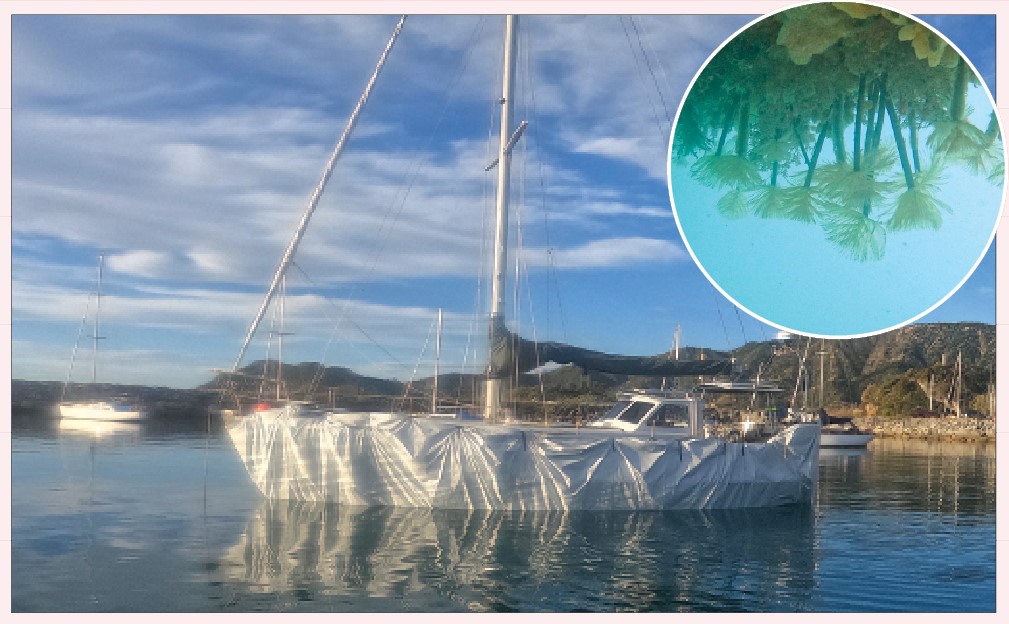News in brief

Sabella spallanzanii (Mediterranean fanworm) was discovered on a vessel at Port Tarakohe. Photo: Supplied/Tasman District Council.
Boat wrapped after pest discovered
While undertaking yearly marine biosecurity surveillance at Port Tarakohe, the dive team discovered Sabella spallanzanii (Mediterranean fanworm) on a vessel. The vessel had recently re-located from Auckland, a known hot spot for this pest marine worm. Tasman District Council, Nelson City Council, Marlborough District Council and the Ministry for Primary Industries work collaboratively on Sabella management in the Top of the South Marine Biosecurity Partnership. Sabella can form dense colonies and compete for nutrients with commercial crops like mussels and native marine organisms. As a dive team was already on site at Port Tarakohe, it was decided to “wrap” the vessel promptly. Samples of Sabella were sent to NIWA for analysis to determine if the worms were of spawning age. Results revealed that some of the samples sent were of spawning age, but fortunately they had not yet spawned. Surveillance is key in keeping this pest out of our region and is scheduled to continue over the coming season.
New Nelson College principal welcomed
Nelson College welcomed their new principal Richard Washington on Monday. The Nelson community came out in force to show their support for Richard through waiata, a haka and some tributes from his old school, St. Thomas of Canterbury. Accompanying Richard is his wife and three children who are returning to New Zealand after some time in South Korea, where Richard held a post as deputy principal at Jeju School.
Rethink Waste launch ‘Bring It’
Nelson City Council’s Rethink Waste are launching ‘Bring It’ with local cafes. This in an initiative aimed at reducing the number of takeaway coffee cups that end up in landfill. Bring a clean, reusable coffee cup to any participating cafe to receive a discount.
Fire service deployed to Canada wildfires
Fire and Emergency New Zealand along with the Department of Conservation and Forest Protection Services have sent seven incident management team members to assist Canada with its wildfire response in British Columbia, including two from the Nelson Marlborough region. The deployment was confirmed following a formal request for assistance from Canadian Interagency Forest Fire Centre to Fire and Emergency NZ.
Dry conditions concern for Wai-iti
Dry conditions in parts of Wai-iti raised concerns at a meeting of Tasman District Council’s environment and regulatory committee meeting last week. The Wai-iti dam was crucial in abating more severe restrictions in the Wai-iti zone over the past summer. The dam was drawn down to approximately 12 per cent and with the lack of rainfall and the nature of the small catchment geology, the dam storage had only risen to 17.3 per cent by 27 June.
Fungus introduced to infect pest plant
The fungal biocontrol agent known as Tradescantia yellow leaf spot fungus, which infects wandering willy, was introduced to three new areas in Tasman in April. Two of these releases were in reserves in Richmond, and the third release was in a reserve at Ruby Bay. This fungus requires some moisture to be present and works well in cooler climatic conditions. The fungus penetrates the leaves and causes yellow spotting which leads to the leaves dying.
Salt marsh restoration begins
Salt marsh restoration has commenced at Rough Island, next to the Equestrian Park. The project aims to re-establish salt marsh by increasing the culvert capacity from one 300mm culvert to three 300mm culverts. The work also includes planting of areas with salt-tolerant plants, and planting in terrestrial zones around the salt marsh to help to screen the area for typically shy marsh bird species. Trial plots (transects) will be set up to measure the natural regeneration of salt marsh vegetation.
